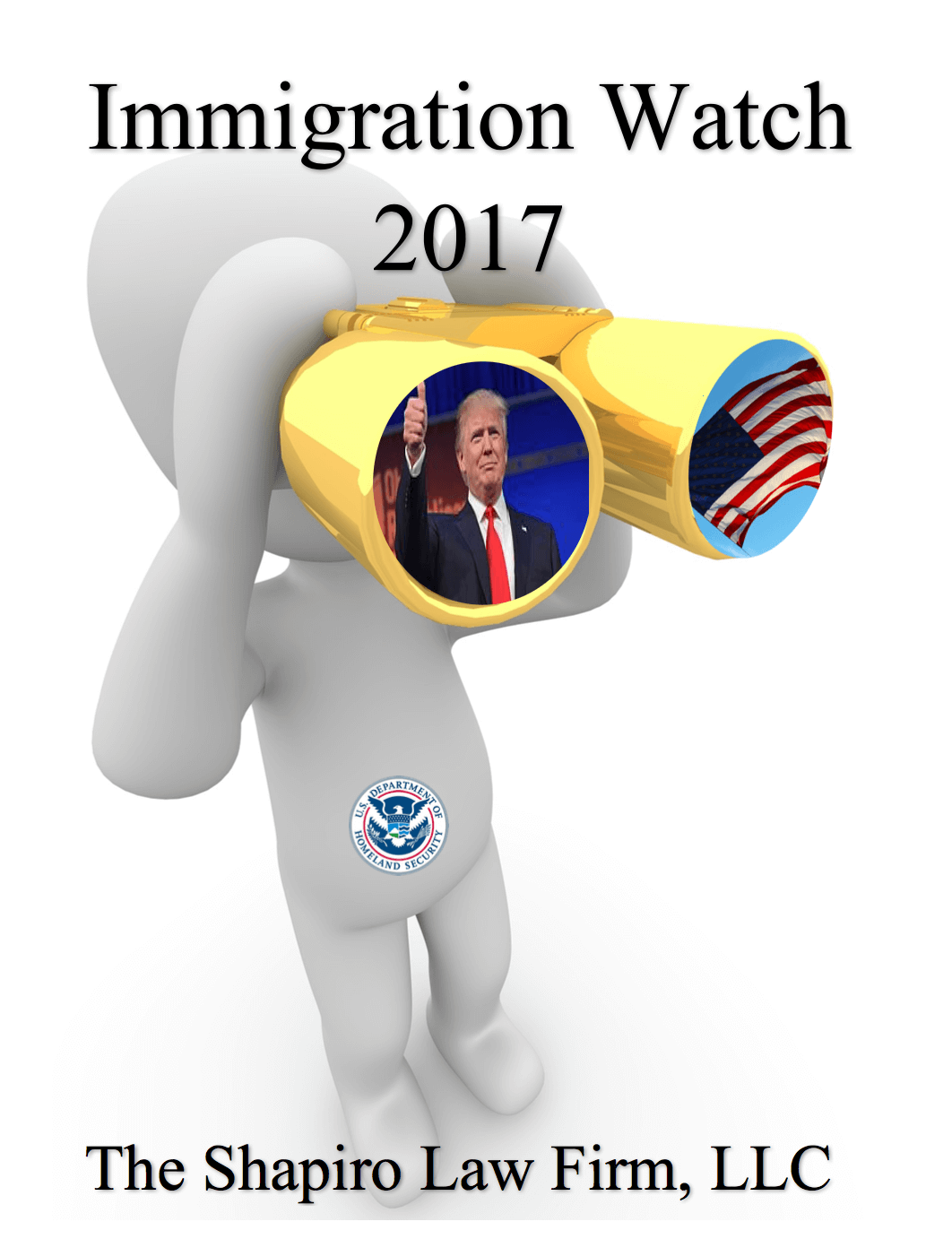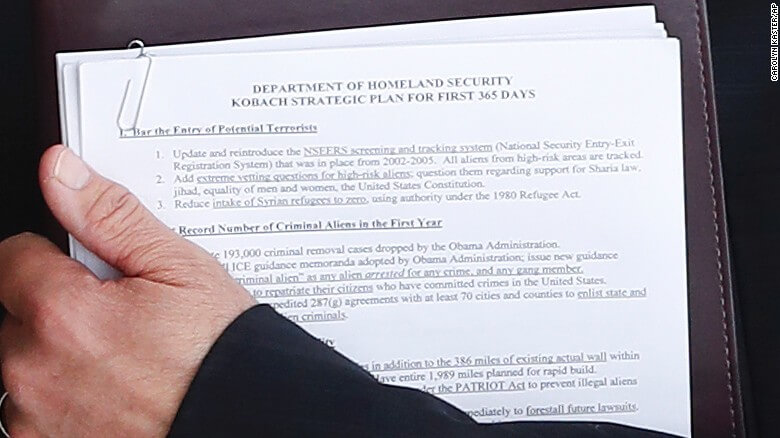#ImmigrationWatch2017 | Topic #3: Immigration Attorney Opinion: A Muslim Registry such as NSEERS should not be reinstated. What is NSEERS? Why was is created? Did it work? Did it stop terrorism? These answers and more.

Throughout his campaign, President-Elect Trump repeatedly pledged to institute a Muslim Registry and/ or a ban on immigration from terror-prone regions. Other then this general statement, Trump has not provided much for information regarding what such a registry will look like or how it will be enforced. Since the election, the uncertainty of Trump's proposal has understandably caused Muslim people all over the world, particularly those who are currently inside the United States to live in a constant state of fear and anxiety.
Without knowing the details of Mr. Trump’s plans, we have struggled to provide our Muslim clients with advice on how to prepare for the incoming administration, and it has been even harder to provide concrete reassurances to our Muslim clients that they will not face bars to entry or selective prosecution regarding being placed into removal/ deportation proceedings.
Last week, President-Elect Trump met with Kris Kobach, to discuss appointing Mr. Kobach as the Secretary of the Department of Homeland Security (DHS). At the meeting, Mr. Kobach was photographed holding a document outlining his plans for the first 365 days of his potential cabinet appointment. The blown up photograph reveals some of the contents that Mr. Kobach discussed with Mr. Trump at the meeting, all of which appears to be in line with Mr. Trump’s campaign promises regarding a Muslim Registry. Notably, the first line of the document called for reinstating the NSEERS program.

The document Kansas secretary of state Kris Kobach is holding during a photo-op with President-elect Donald Trump on Sunday, November 21, 2016, in Bedminster, NJ. (AP Photo/Carolyn Kaster)
It is impossible and ill-advised to wildly speculate as to whether or not Trump with fulfill his campaign promise, but it does appear that if he chooses to follow through with a Muslim Registry, NSEERS will be a guide, as it already exists in the law, has been cited by his campaign and transition team advisors and now appears to be at the top of the list of the potential next Secretary of DHS. Accordingly, my goal here is to explain what NSEERS is, why it became law in the first place, and why reinstating NSEERS or a similar program is redundant, ineffective and contradictory to fundamental American principles that prohibit overt and covert discrimination alike.
What is NSEERS?
NSEERS, created in the aftermath of the September 11, 2001, terrorist attacks, stands for the 'National Security Entry-Exit Registration System.' NSEERS is also referred to as "Special Registration."
Under NSEERS, all nonimmigrant males, 16 years or older, from countries that the Attorney General identified as presenting elevated national security concerns were required to report to the INS, (*in 2003 INS changed to USCIS), for registration, fingerprinting, and photographing. See, 8 C.F.R. § 264.1(f)(4); see also, Nat'l Council of La Raza v. Dep't of Justice, 411 F.3d 350, 353 (2d Cir. 2005). In addition to tracking entries and exits, there was a domestic component of NSEERS that required over 80,000 males present in the Untied States on nonimmigrant visas from Muslim-majority nations to appear at local immigration offices and register in accordance with the program. At these appointments, NSEERS program compliers would be subject to fingerprinting, photographs, document review and extensive questioning.
What law created NSEERS?
There is not one specific piece of legislation that provides the authority for NSEERS.
One of the main statutes cited by the courts and the Department of Justice, (DOJ), as authority to create NSEERS is found in the Immigration and Nationality Act (INA) § 236, which contains a specific provision on the registration of certain groups. Under the INA, the Attorney General is permitted to require registration for several classes of non-immigrants including (1) alien crewmen, (2) holders of border-crossing identification cards, (3) aliens confined in institutions, (4) aliens under order of removal, (5) aliens who are or have been on criminal probation or criminal parole within the United States, and (6) aliens of any other class not lawfully admitted to the United States for permanent residence.
The rationale for establishing NSEERS is set forth in the Federal Register as follows:
Recent terrorist incidents have underscored the need to broaden the special registration requirements for nonimmigrant aliens from certain designated countries, and other nonimmigrant aliens whose presence in the United States requires closer monitoring, to require that they provide specific information at regular intervals to ensure their compliance with the terms of their visas and admission, and to ensure that they depart the United States at the end of their authorized stay. On June 13, 2002, the Department published a proposed rule to modify the regulations to require certain nonimmigrant aliens to make specific reports to the Immigration and Naturalization Service; upon arrival, approximately 30 days after arrival; every twelve months after arrival; upon certain events, such as a change of address, employment, or school; and at the time they leave the United States. This final rule adopts the proposed rule without substantial change.
Registration and Monitoring of Certain Nonimmigrants, 67 Fed.Reg. 52584 (Aug. 12, 2002).
In 2002, Attorney General John Ashcroft also explained that NSEERS was created to comply with the mandate by Congress that DOJ build an entry-exit system to track all nonimmigrants who come to the United States. Ashcroft further explained that NSEERS was the first crucial phase in this endeavor. In 2003, DHS took over this role and eventually the US-VISIT system was ready to track all nonimmigrants and NSEERS was suspended, yet still remained on the books. In 2011, DHS ended the NSEERS program. The notice released in conjunction with the end of the NSEERS program can be found here.
The constitutionality of NSEERS is outside the scope of this post, but it should be noted that the Federal Circuit Courts, the highest courts to have addressed this issue, have not found NSEERS to be unconstitutional. However, it is also important to point out that the court cases that have challenged the constitutionality of NSEERS generally dealt with aliens placed into removal proceedings after voluntarily complying with NSEERS, who were unlawfully present in the United States. The independent ground for removability precluded most courts from ever getting to the issue of whether or not NSEERS exceeded the broad discretionary power of the Attorney General. See, Zerrei v. Gonzales, 471 F. 3d 342 (2nd Cir. 2006). Courts that have reached the issue have upheld the constitutionality of NSEERS by claiming that there is a rational basis between special registration and national security. See, Kandamar v. Gonzales, 464 F. 3d 65 (1st Cir. 2006).
What was the purpose of NSEERS?
As explained in the Federal Register excerpt above, the purpose of NSEERS was to prevent terrorism and to keep track of nonimmigrants entering and exiting the United States. NSEERS was the precursor program to the electronic exit-entry system that we now have in place that keeps track of all non-immigrants entering and exiting the country. This program used to be known as US-VISIT (United States Visitor and Immigration Status Indicator Technology) and and in 2013 it became known as OBIM (The Office of Biometric Identity Management).
So did NSEERS stop any terrorists?
This question is harder to answer due to the lack of transparency of the program, the lack of statistics kept on the program, and the fact that suspected terrorists did not have to be charged with terrorist-related crimes to be removed from the country. In fact, many people who voluntarily complied with the program who were inside the United States ended up being placed in deportation proceedings due to the fact that their wholly independent immigration violation (for example, overstaying their visa) came to light as a result of Special Registration compliance. This independent ground for removability complicates the attempts to analyze the effectiveness of NSEERS because DHS did not need to bring about terrorism-related to charges in order to place aliens into removal proceedings and prove removability by clear and convincing evidence. DHS did their job if they proved that an alien was removable based on the visa overstay and did not have a requirement to push terrorism-related grounds of removability, a charge which presumably would be a lot harder to prove.
Opponents of NSEERS argues that terrorists inside the United States simply would not comply with the program and hope to remain undetected by the government. Many nonimmigrants, whether here legally or not, failed to comply with the special registration for this very reason, they were afraid that they would be detained or deported if they attempted to comply. DHS has refused to provide Congress with any statistics concerning the number of suspected terrorists identified with this program, stating that this information is classified. Experts that have studied this program, however, have found that too much data was collected as a result of the program to prove useful, and that the aim of casting a wide net to detect potential terrorists based on no actual suspicion, even if some terrorists were in fact caught, was a waste of resources that could be better spent elsewhere.
What we do know though, is that information obtained through NSEERS did NOT result in one terrorism-related criminal conviction. It also destroyed relationships with friendly countries who had worked with the United States to stop terrorism within their borders prior to the institution of the program. Reinstating such a controversial program is certainly likely to reignite tension with Muslim-majority countries and further strain ties with multiple countries around the world.
Bottom Line
Muslims inside the United Staters, legally or not, do have a legitimate reason to be concerned about such a registry being reinstated when President-Elect Trump takes office on January 20, 2017. Whether you agree with such a registration or not, there is legislative and judicial authority that will allow NSEERS or a similar program to be reinstated. The best advice I can give nonimmigrants in the United States right now is to contact an immigration lawyer immediately to see if there is a path to a green card out there for you. If there is a path, get started on this process BEFORE January 20, 2017, to decrease any potential negative impact that such a Special Registration may have on your case.
*Please note that the contents of this post and any content that you see on The Shapiro Law Firm, LLC website should not be construed as legal advice, nor does anything on this website constitute the formation of an attorney-client relationship. If you are seeking help with a legal matter, please contact us directly for assistance.*




